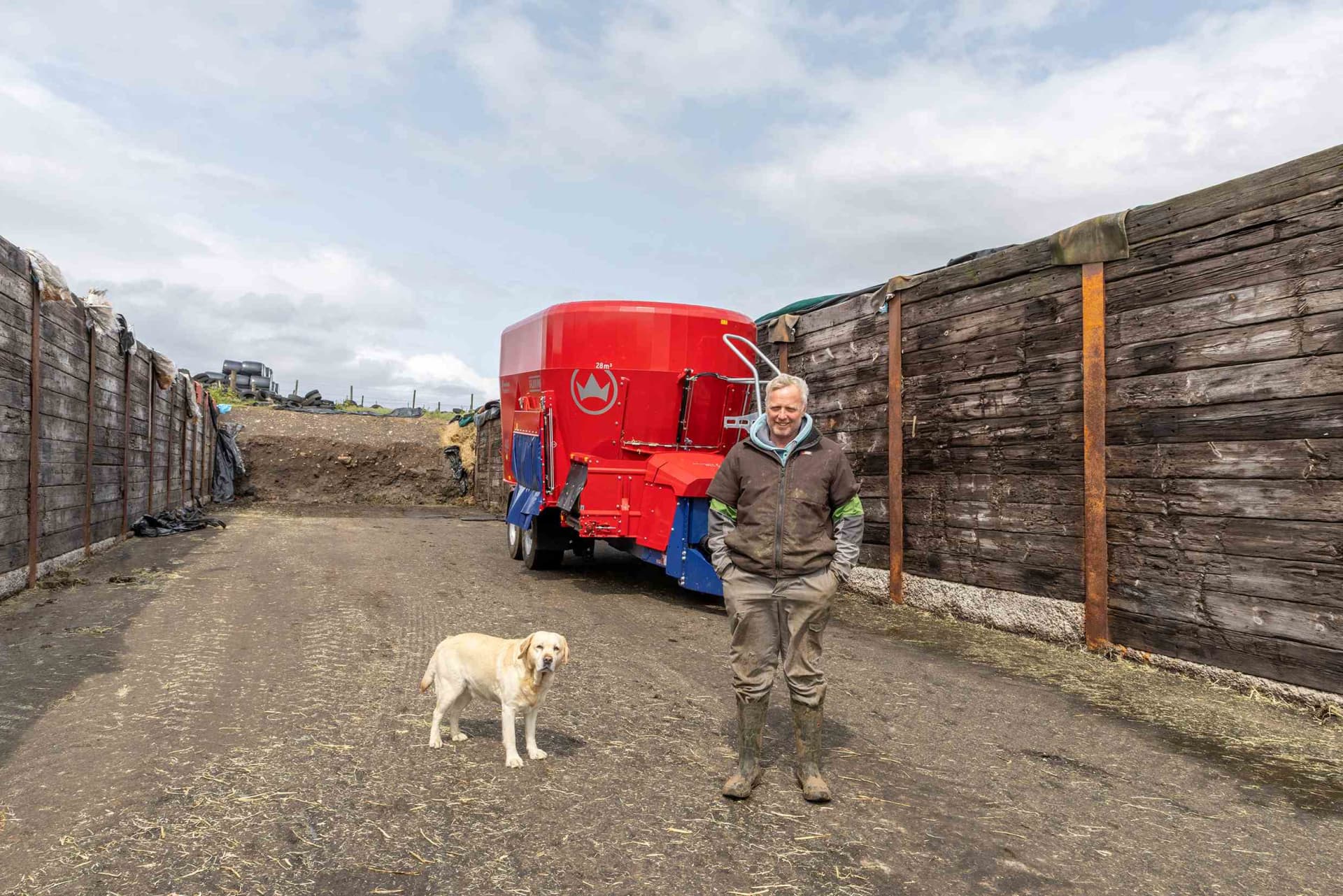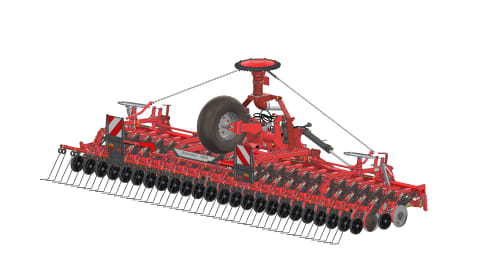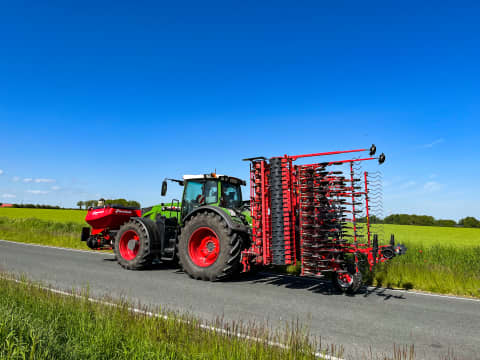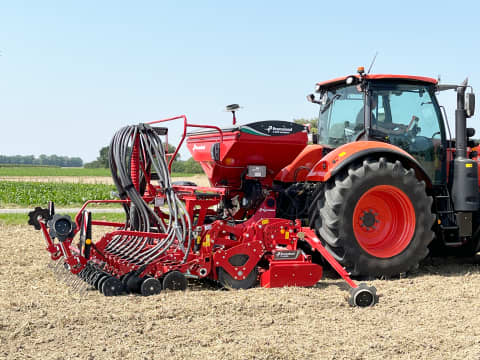But when cows are housed, that emphasis changes to ration quality, relying on high-quality silage mixed with straights and fodder beet to maintain production.
“We get 55% of our milk from forage, so having a well-mixed, decent ration is really important if we’re to keep our Montbeliardes delivering 7,500-litres of high-quality milk,” explains Dougie Hogarth.
Until recently, that ration has been under scrutiny, with poorly mixed ingredients responsible for such a reduction in milk yield, that the diet feeder has been replaced by a Kverneland Siloking twin auger trailed machine.
“The difference is night and day,” explains Dougie, who believes that his previous machine’s poor mixing performance was responsible for a reduction of up to one litre per cow, per day. “You’ve only got to look into the top of the Siloking when it’s mixing to see how the entire contents are thoroughly mixed around the outer edge of the tub and between the two vertical augers, and it happens in fairly quick time. There’s no dead spots in this tub.”
The 28 cubic metre capacity, TrailedLine 4.0 Premium model was supplied by J&S Montgomery, as was the farm’s ED 85/200 five-furrow plough.
“We’ve had good support from Montgomery’s for the plough, so the diet feeder shouldn’t be any different,” he says.
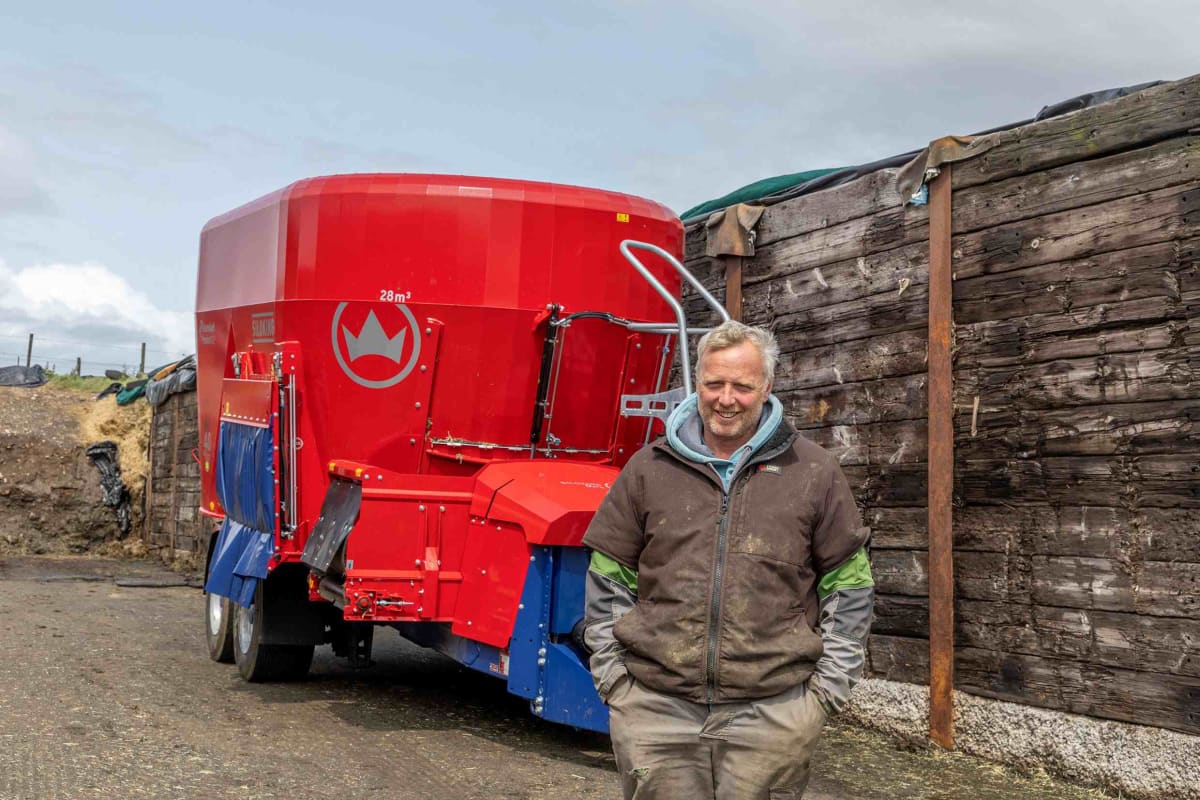
The feeder specification includes a hydraulic front cross-conveyor that enables feeding into bunkers and raised troughs, while a wide, HD door on the right-hand side affords rapid unloading along feed passages.
“It’s a few cubes bigger than our previous machine, which gives us a bit of spare capacity, and despite the extra height, there’s no problem accessing any of our buildings,” he says.
With 340 cows in milk at Knockrivoch, the herd is fed one standard ration, with in-parlour feeding used to differentiate high- and low-yielders. Young stock, dry cows and store cattle get different mixes, and the shorter mixing times combined with quicker unloading in passageways have also brought an increase in operational efficiency.
“The HD door means we can feed much more quickly now, improving our efficiency,” he says. “From what we’ve done so far, it’s certainly an impressive machine and feeding throughout next winter should be a much more enjoyable task.”
“And if we can get an extra litre from feeding a much better ration, it won’t take long to pay for itself,” adds Dougie.

